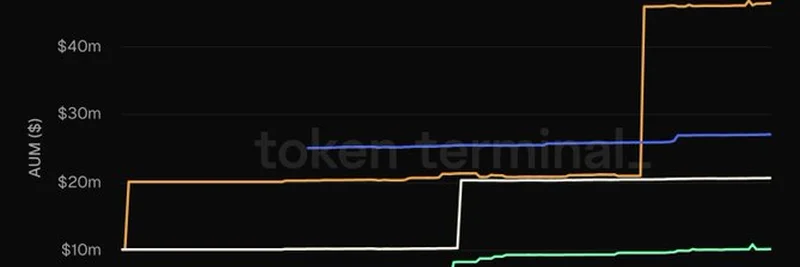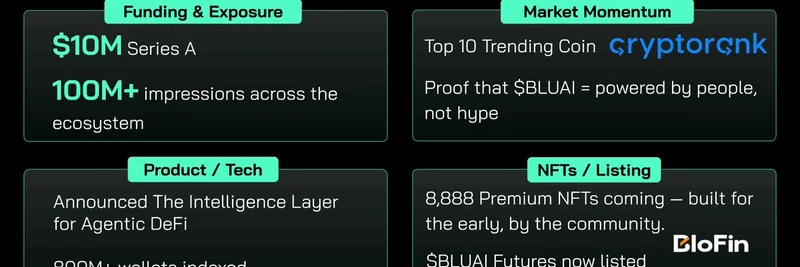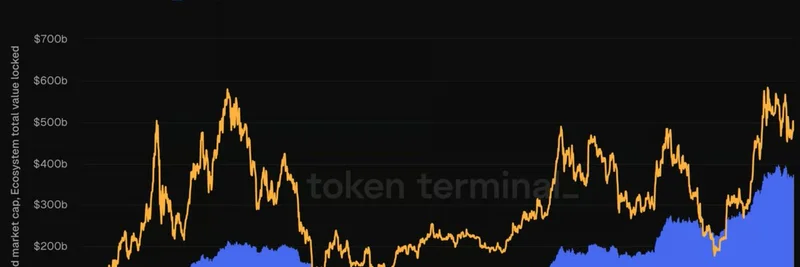Hey there, crypto enthusiasts! If you’ve been keeping an eye on the latest trends in blockchain investing, you’ve probably heard about the Apollo Diversified Credit Securitize Fund. Recently, Token Terminal dropped an intriguing update on X about its Assets Under Management (AUM) across six different blockchain networks. Let’s break it down in a way that’s easy to digest, especially if you’re new to the world of tokenized private credit.
What’s the Buzz About?
The Apollo Diversified Credit Securitize Fund is making waves by offering investors a chance to dive into a diversified global credit strategy. This includes corporate direct lending, asset-backed lending, and even performing, dislocated, and structured credit. What’s cool here is that the fund is accessible on multiple blockchains—Ethereum, Solana, Aptos, Polygon, Avalanche, and Ink—giving it a broad reach in the decentralized finance (DeFi) space.
According to the chart shared by Token Terminal, Ethereum is currently the star, boasting the highest AUM. As of July 2025, its AUM has climbed to around $40 million, with a noticeable spike in recent months. Other networks like Solana and Polygon are also seeing growth, though they’re trailing behind Ethereum for now.
The Role of ACRED and Securitize
A key player in this story is the ACRED feeder fund, which acts like a gateway for investors. Normally, getting into the Apollo Diversified Credit Fund might require a hefty investment, but ACRED lowers the entry barrier to a $50,000 minimum. That’s a game-changer for smaller investors! However, there’s a trade-off: the management fee is 2% (compared to the usual 1.5%), with an extra 0.5% tacked on by Securitize.
Securitize, the platform behind this tokenized fund, is all about making private credit more accessible. By using blockchain technology, they turn traditional debt instruments into digital tokens that can be traded or held, bringing transparency and efficiency to the table. This tokenization process is a big deal in the private credit market, and Apollo’s partnership with Securitize is a prime example of how it’s being put to use.
Why Ethereum Leads the Pack
So, why is Ethereum outpacing the others? It’s likely due to its established reputation and robust infrastructure. As the pioneer of smart contracts, Ethereum has a massive ecosystem of developers, users, and investors. The chart shows a steady increase in AUM on Ethereum, especially from June to July 2025, suggesting growing confidence in its stability and scalability for tokenized assets.
That said, networks like Solana and Polygon aren’t far behind. Solana’s high-speed transactions and low costs make it attractive, while Polygon’s layer-2 solution offers a cost-effective way to scale Ethereum’s network. It’ll be exciting to see how these dynamics play out as the fund grows.
What This Means for Blockchain Practitioners
For those of you in the blockchain space, this is a golden opportunity to learn about private credit tokenization. It’s a trend that’s gaining traction, with companies leveraging blockchain to unlock new investment avenues. If you’re a developer or investor, keeping an eye on funds like ACRED could give you an edge in understanding how tokenized assets might shape the future of finance.
At Meme Insider, we’re all about staying ahead of the curve. While this fund isn’t a meme token, the underlying technology and market trends can inspire similar innovations in the meme coin world. Plus, with our rich knowledge base, you can dive deeper into how blockchain is evolving—check out our articles on tokenization trends to get started!
Final Thoughts
The Apollo Diversified Credit Securitize Fund’s AUM growth is a testament to the power of blockchain in transforming traditional finance. With Ethereum leading and other networks like Solana and Polygon gaining ground, 2025 is shaping up to be a big year for tokenized private credit. Whether you’re an investor or just curious, this is a trend worth watching. Got questions? Drop them in the comments, and let’s chat about how this could impact the meme token space too!




